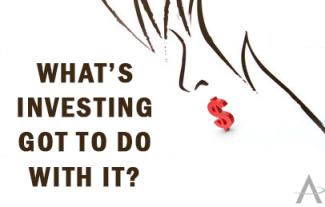
What's Investing Got To Do With It?
With so much bad news in the market, with talk of a global recession and a no growth decade for the stock market, what are we to do about investing? What has served us well since 2008 may not work in this market now.
The CPI report on Friday showed that inflation rose 8.6%, the highest rate since 1981, with shelter inflation high, which is one third of the index. Easing supply chain restraints and releasing oil reserves are key to the government’s response. Selling was widespread.
The Atlanta Fed’s GDP Now tracker shows the U.S. economy could be headed for a second consecutive quarter of negative growth, meeting the technical definition of a recession.
The likelihood of a global recession, first in Europe seems more likely, as the war in Ukraine continues to tighten a chokehold on the world’s food supply and slow productivity worldwide.
What does this mean for investing?
Due to elevated valuation metrics and serious geopolitical risks, as well as a higher household ownership of stocks, supply chain disruptions and margin and regulatory risk will affect the markets dramatically - more so than in the last twenty years.
After the Dot Com bubble and through the Great Financial Crisis of 2008, we saw 20% downward counter trends. The average annual return of 13% in the 2010’s (makes us feel old, right?) may not be attainable and note that the average annual return during the 2000’s was -0.9%.
What to do?
Make no mistake, passive investing will suffer.
Buy and Hold portfolios, will not increase the likelihood of success, even with the advantage of the baskets of issues in Exchange Traded Funds. We have been selling into these rallies consistently, actively moving assets into cash and income generating securities for safety during this volatile and unpredictable time. V
Who should worry?
Twenty-year market cycles tend to do better than ten-year cycles. If you are one of our younger Emerging Investors (sign up for information about our Emerging Investor program here) your portfolio will be able to stand the test of time and investing comes with the added benefit of dollar cost averaging. Retirement account investing such as 401(k)’s will require special attention and should not be allowed to sit passive in fund choices.
Our clients closer to retirement still have a growth component to their portfolios but great attention is paid to hedging the portfolio for market downturns and will be more heavily invested in select income producing securities. This itself requites diligence as the choice for fixed income is not as simple as it once was. Decisions such as present and future tax brackets, the impact of rising interest rates and future income needs must be carefully considered.
Every one of our portfolios is put through rigorous risk metric testing where we assess the client’s lifetime risk as well as the expenses charged on every level in the portfolio. For many clients, we use planning software to gauge the impact of potential market returns and risks in the future. This is available to all clients.
Many of our clients are choosing to either age in place or move to facilities when they may require more assistance in everyday living. In both cases, special attention is paid to providing for the continued and often expensive cost of care. We work closely with many families to ensure that their loved ones are safe, both financially and personally. Elder Abuse fraud is rampant and getting worse and we collaborate with clients to minimize this risk for our older clients. We have resources to assist you with assessing elderly client risk.
Our tag line ‘Wealth Management for Life” reflects this comprehension of the parts of clients lives as it pertains to the whole. This is the definition of holistic that we see in many places related to financial advising. Its more than a term - it is a way of life for us, of interacting with our clients and their families on a meaningful level.

